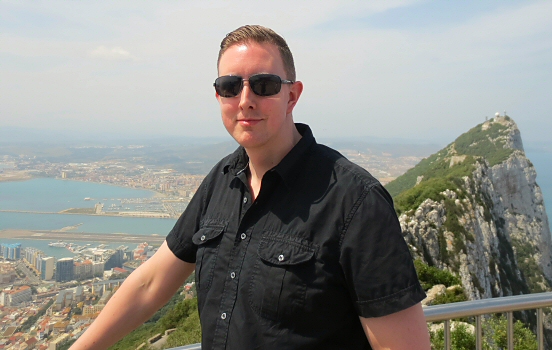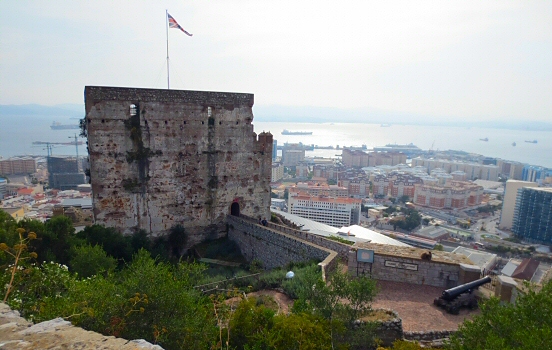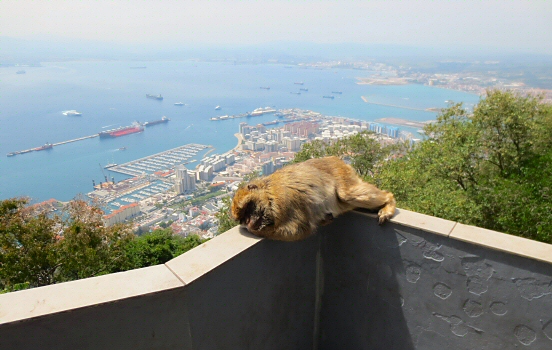The Rock of Gibraltar rises like a stubborn old man at the edge of Europe. Grizzled, immovable and full of stories you’ve heard before. Part British, part Spanish, this odd chunk of limestone has been a pawn on the geopolitical chessboard for centuries. Everyone’s taken a shot at owning it, from the Moors to the Brits, and the thing still stands, quietly smirking at the chaos around it.
 At the top of the Rock.
At the top of the Rock.
In ancient times, this was one of the Pillars of Hercules, flanking the entrance to the Strait of Gibraltar. The other pillar is located on the North African shore, visible at the horizon. According to Plato, the lost city of Atlantis was located beyond the pillars.
In reality, the city of Gibraltar is surreal, like someone dragged a chunk of London to the Mediterranean, sprinkled in a few apes, and said, “Deal with it”. The British have held the territory since 1713, but there are layers of history preceeding them, such as the remains of 8th century Moorish castle.
 Moorish Castle remains.
Moorish Castle remains.
The Rock itself is no joke. You can hike the limestone ridge it if you’re a masochist, or take the cable car like a normal human who’s not out to prove something. After my short and sweet cable ride, I’m ready to face the relentless sun. And the apes.
Apes? Yes, the mountain is filled with Barbary ape, the only wild monkeys in Europe. Cute from a distance, cunning little bastards up close. They’ll mug you for your sandwich, your sunglasses, maybe even your soul. Don’t say you weren’t warned.
They even managed to startle James Bond (Timothy Dalton) in the 1987 movie The Living Daylights. As I walk along the paths on top of the cliff, the very few places with any shade is occupied by angry apes, so I continue along the road to suffer in the heat. As I look down the slope, I see a few people going up the steep stairs in a very slow pace, clearly bothered by the hot sun and hungry apes.
 Monkey business.
Monkey business.
Mark Twain was here in 1867, as Gibraltar was his first sight of Europe and he described the ascent in his book The Innocents Abroad published two years later:
“On the topmost pinnacle of Gibraltar we halted a good while, and no doubt the mules were tired.”
— Mark Twain (1867)
Fortunately, there are safe havens inside the very Rock. I enter St. Michael’s Cave, an impressive limestone cave which provides a refreshing moment of shade. On the other side of the hill, great siege tunnels are still there, from a time when people still fought wars with bayonets and bad hygiene. In addition to that nasty business, they also made the Rock look like Swiss cheese in the process.
As I stand on the top of the Rock, looking down at both Africa and Europe, as well as Great Britain and Spain in the same frame, it becomes even more obvious why this barren ridge has been of utmost importance during the centuries.
Comments
No comments yet.
Leave a reply